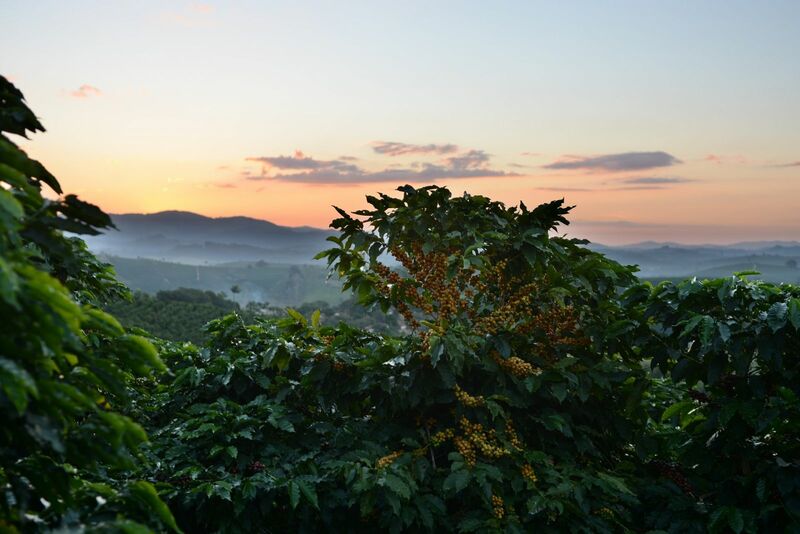
July arabica coffee (KCN23) on Friday closed down -1.10 (-0.60%), and July ICE robusta coffee (RMN23) closed up +21 (+0.82%).
Coffee prices Friday settled mixed, with arabica falling to a 1-1/2 month low. Harvest pressures in Brazil are undercutting arabica coffee prices as dry conditions allow the pace of the coffee harvest to accelerate. Also, Friday's rally in the dollar index (DXY00) to a 2-1/4 month high weighed on arabica coffee.
Robusta moved higher Friday after the USDA's Foreign Agricultural Service (FAS) said exporters are struggling to obtain enough Vietnamese robusta beans as farmers there withhold supplies from the market in hopes of obtaining higher prices.
A negative factor for coffee is drier conditions in Brazil's coffee fields that should accelerate the pace of the country's coffee harvest. Meteorologia reported Monday that Brazil's Minas Gerais region received no rain in the week ended May 21, or 0% of the historical average. Minas Gerais accounts for about 30% of Brazil's arabica crop.
Monday's projection from the USDA's FAS was bearish for arabica prices when they said Colombia's 2023/24 coffee production would climb +2% to 11.6 mln bags. Colombia is the world's second-largest arabica bean producer.
Arabica coffee has support from tighter supplies. ICE arabica coffee inventories have steadily declined over the past three months and fell to a 5-3/4 month low Friday of 598,493 bags.
Tightness in robusta coffee supplies has sparked fund buying of robusta coffee futures. On Tuesday, July robusta posted a contract high, and near-futures robusta (K23) posted a record high (data from 2008). Vietnam's General Department of Vietnam Customs reported on May 9 that Vietnam's Apr coffee exports fell -22% m/m at 163,607 MT, and Jan-Apr coffee exports are down -5.5% y/y at 716,580 MT. Vietnam is the world's largest producer of robusta coffee beans. Also, the USDA's FAS on Monday projected that 2023/24 Indonesian robusta coffee production would fall -20% y/y to 8.4 mln bags after excessive rain hindered pollination. Indonesia is the world's third-largest robusta coffee producer.
A bearish factor for robusta coffee was Thursday's projection from the USDA's FAS that Vietnam's 2023/24 coffee production would climb +5% to 31.3 mln bags. Another negative factor is an increase in ICE-monitored robusta coffee inventories Wednesday to a 5-1/2 month high.
Arabica has carryover support from last Thursday when Conab cut its Brazil 2023 coffee crop estimate to 54.7 mln bags from 54.9 mln bags forecast in Jan.
Global coffee supplies have tightened after the International Coffee Organization (ICO) reported on May 4 that global 2022/23 coffee exports during Oct-Mar fell -6.4% y/y to 62.295 mln bags. The Colombia Coffee Growers Federation May 4 that Colombian Apr coffee exports fell -15% y/y to 719,000 bags. Also, Cecafe reported on May 11 that Brazil's Apr green coffee exports dropped -14% y/y to 2.39 mln bags. By contrast, Honduran Mar coffee exports rose +14% y/y to 1.097 million bags. Honduras is Central America's biggest exporter of arabica beans.
Coffee prices also have support as the odds of an El Nino weather event increased, which could undercut global coffee production. On May 11, the U.S. Climate Prediction Center raised the likelihood of an El Nino weather pattern emerging between August and October to 94% from 74% a month ago. If that El Nino pattern occurs, it could bring heavy rains to Brazil and drought to India, negatively impacting coffee crop production.
Robusta has support on global supply concerns after coffee trader Volcafe forecasted the global 2023/24 robusta coffee market would see a record deficit of 5.6 mln bags. In addition, the Association of Indonesian Coffee Exporters and Industries said that Indonesia would see its 2023 coffee production fall -20% y/y to 9.6 mln bags due to damage from excessive rainfall across its growing regions.
The International Coffee Organization (ICO) projects the global 2022/23 coffee market deficit will widen to -7.3 mln bags from a -7.1 mln bag deficit in 2021/22. ICO projects that 2022/23 global coffee production will increase +1.7% y/y to 171.27 mln bags, and 2022/23 global coffee consumption will increase +1.7% y/y to 178.53 mln bags.
The USDA, in its bi-annual report released on December 23, cut its global 2022/23 coffee production estimate by -1.3% to 172.8 mln bags from a June estimate of 175.0 mln bags. In addition, the USDA cut its 2022/23 global coffee ending stocks estimate by -1.7% to 34.1 mln bags from a June estimate of 34.7 mln bags. Meanwhile, the USDA's Foreign Agriculture Service (FAS) on November 22 cut its Brazil 2022/23 coffee production forecast by -2.6% to 62.6 mln bags from a prior estimate of 64.3 mln bags. This year was supposed to be the higher-yielding year of Brazil's biennial coffee crop, but coffee output this year was slashed by drought.
On the date of publication, Rich Asplund did not have (either directly or indirectly) positions in any of the securities mentioned in this article. All information and data in this article is solely for informational purposes. For more information please view the Barchart Disclosure Policy here.






